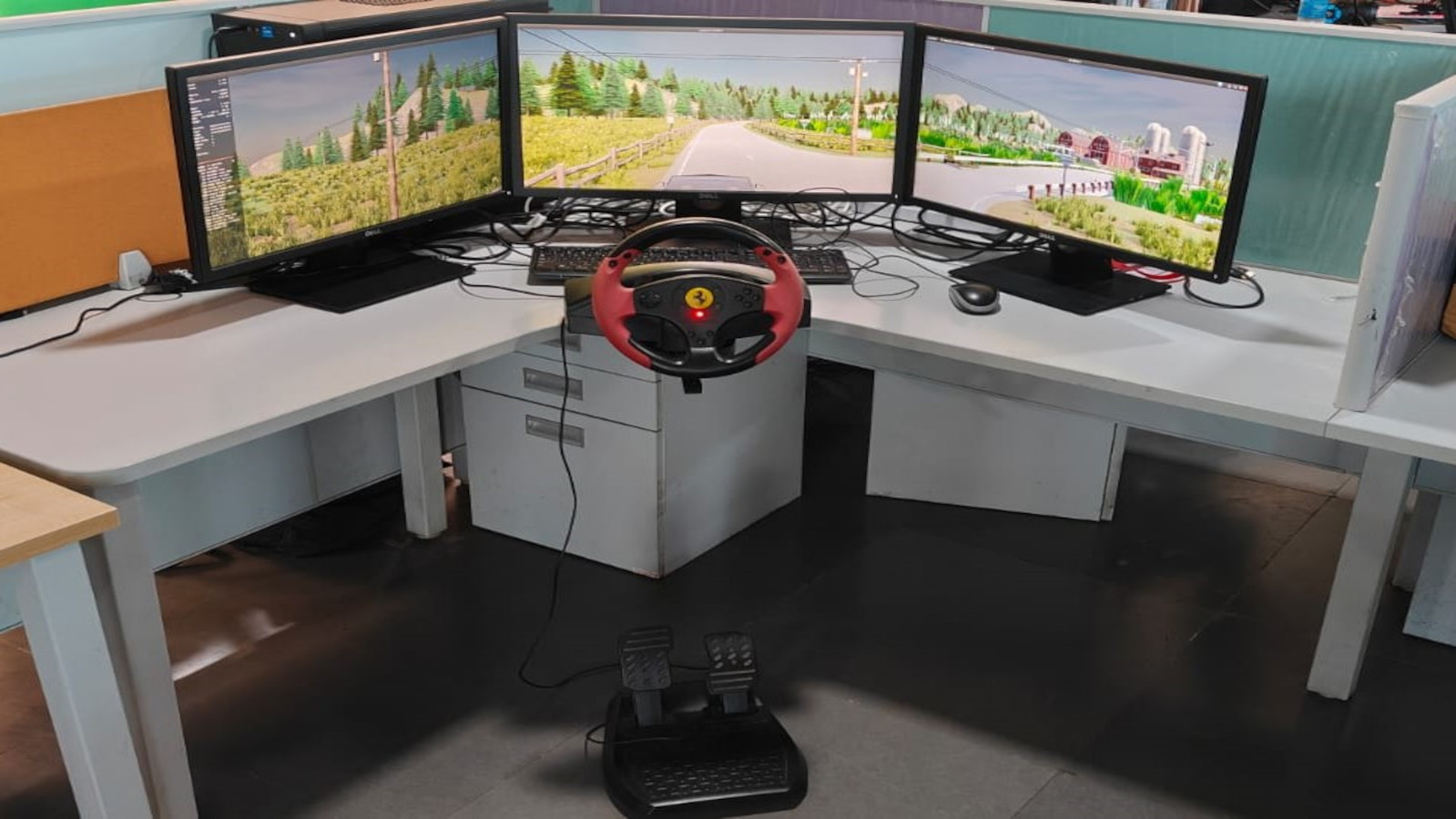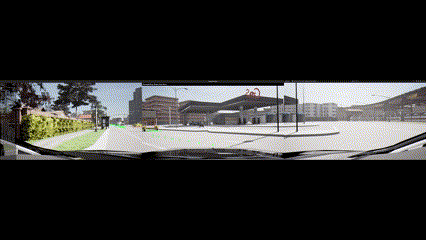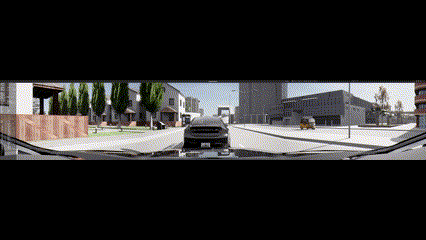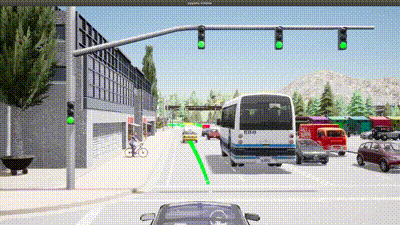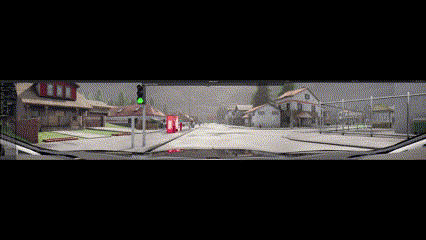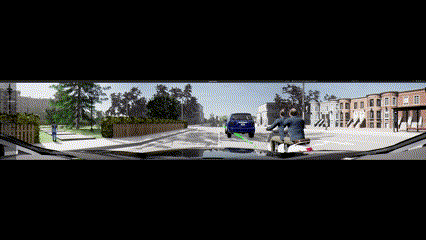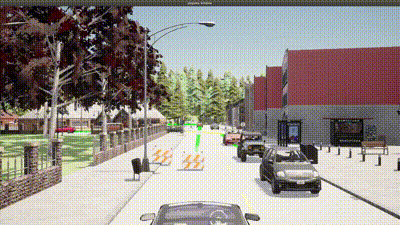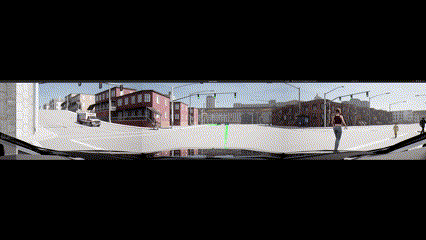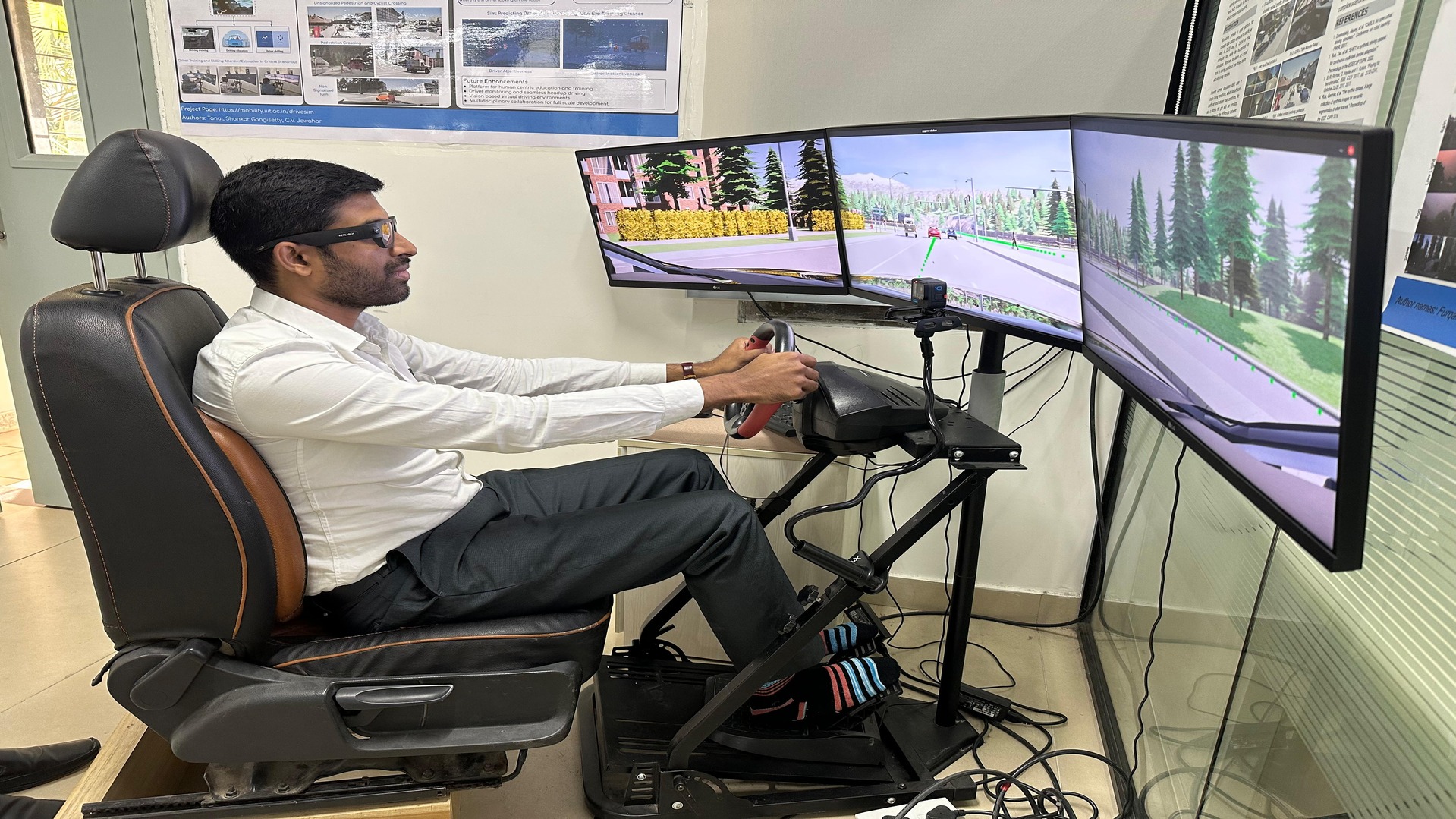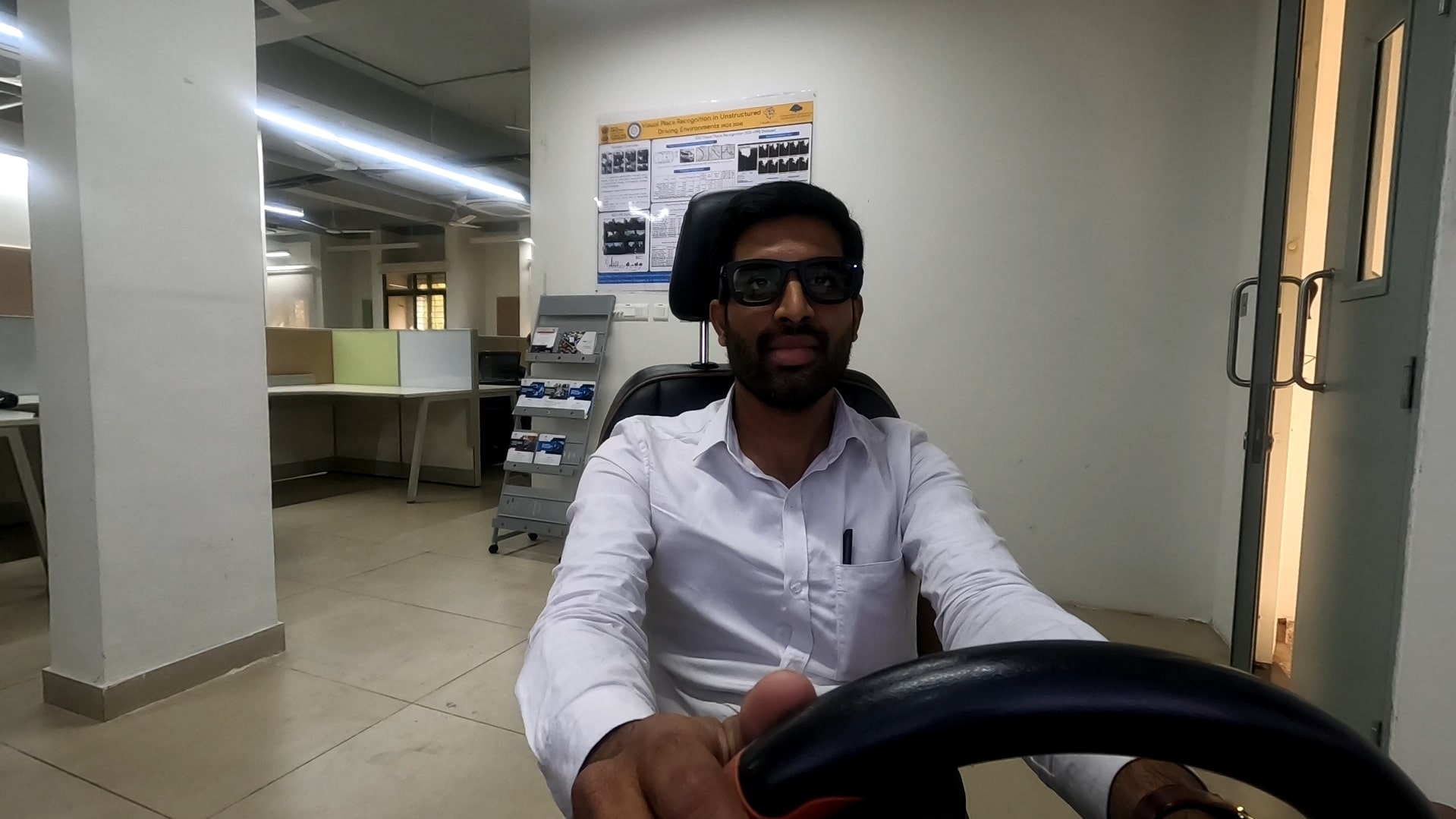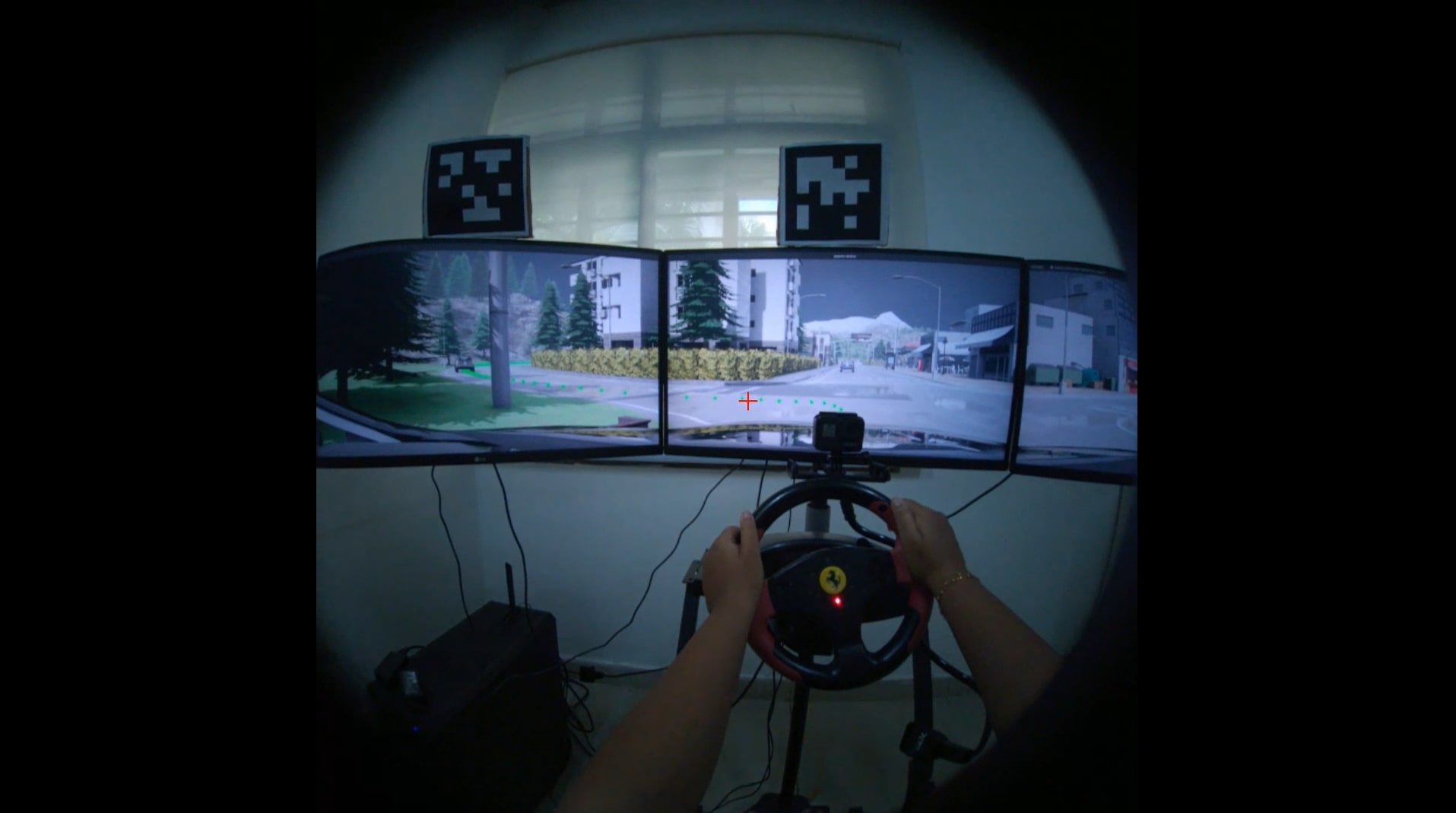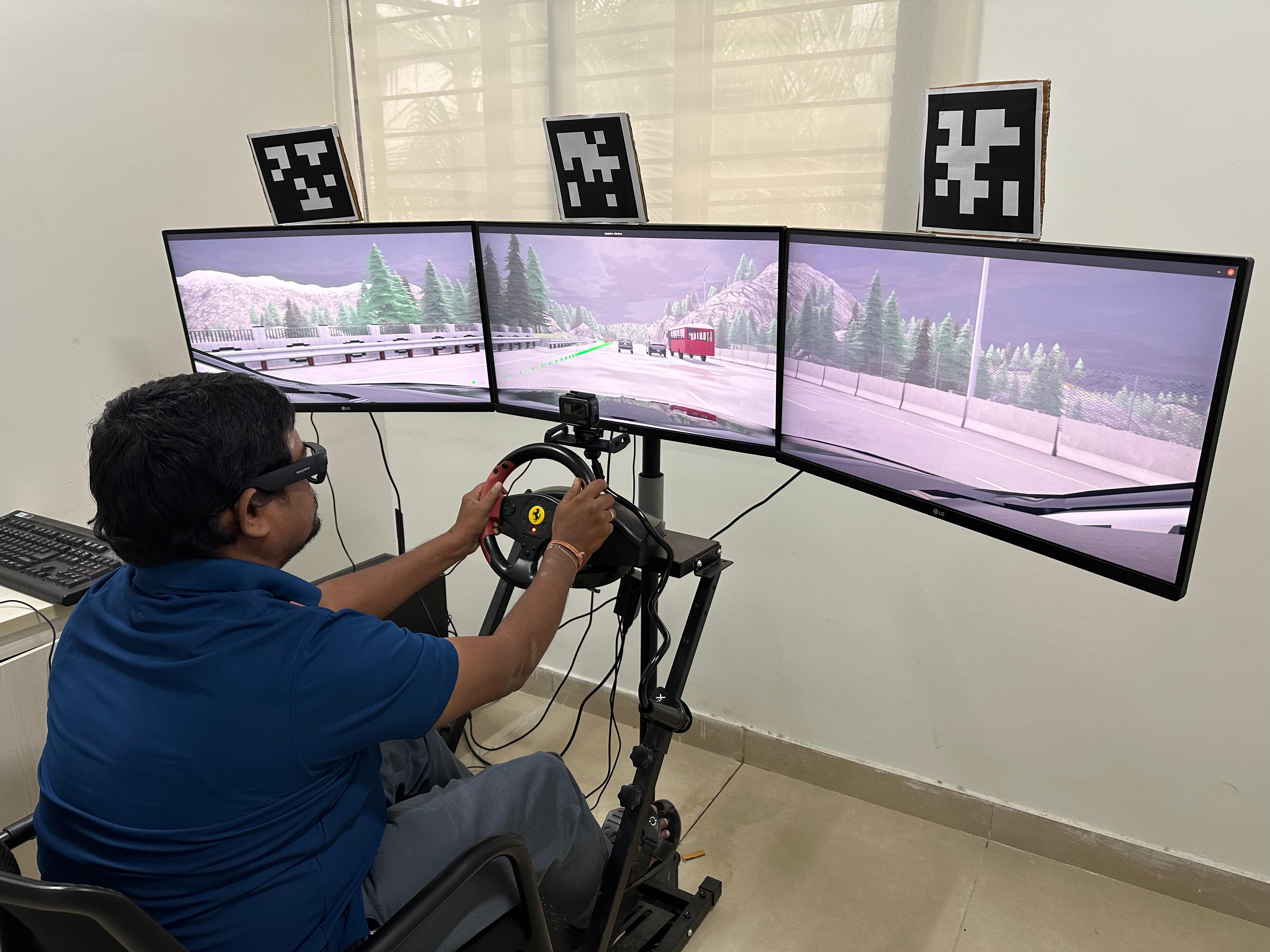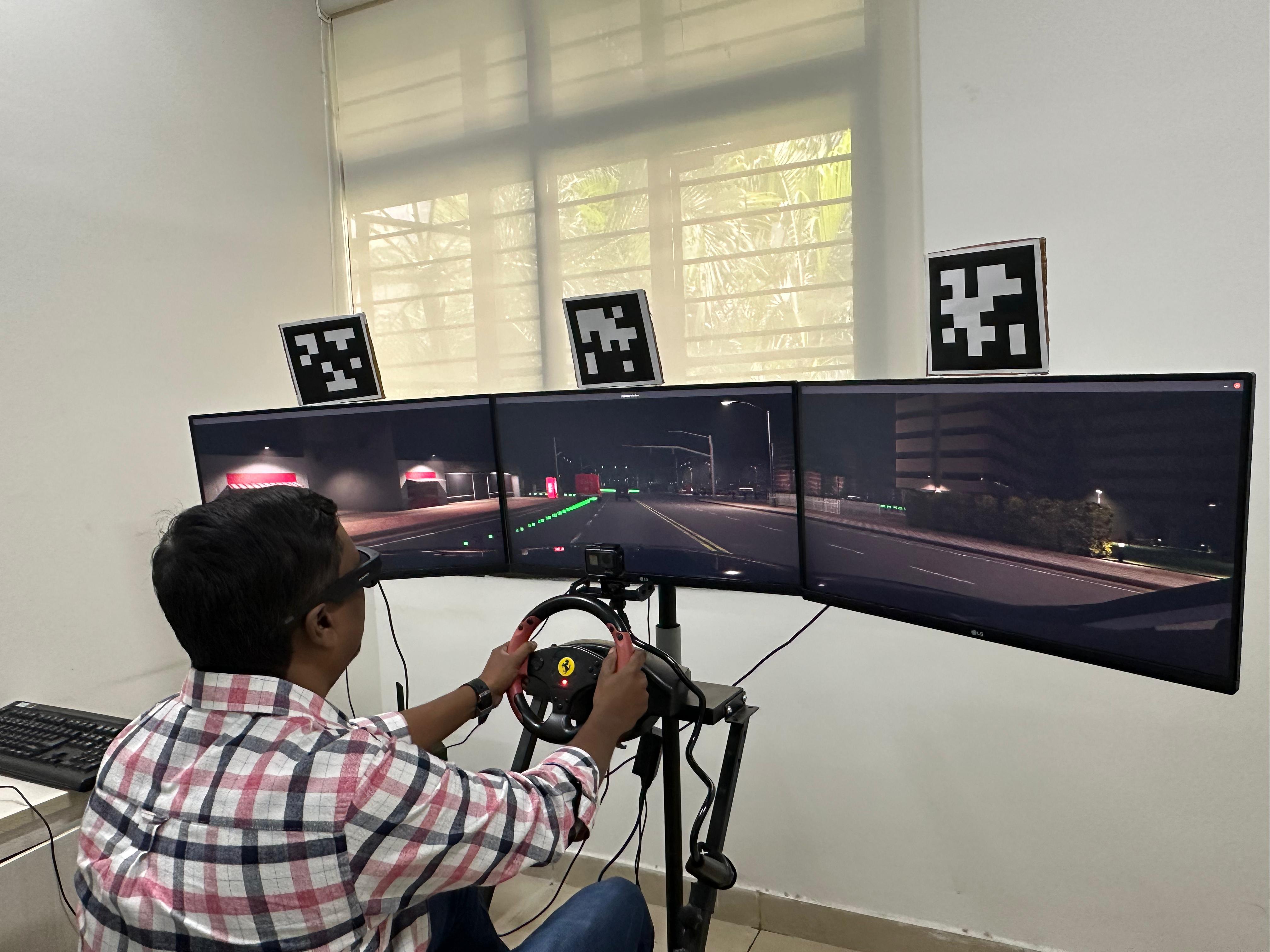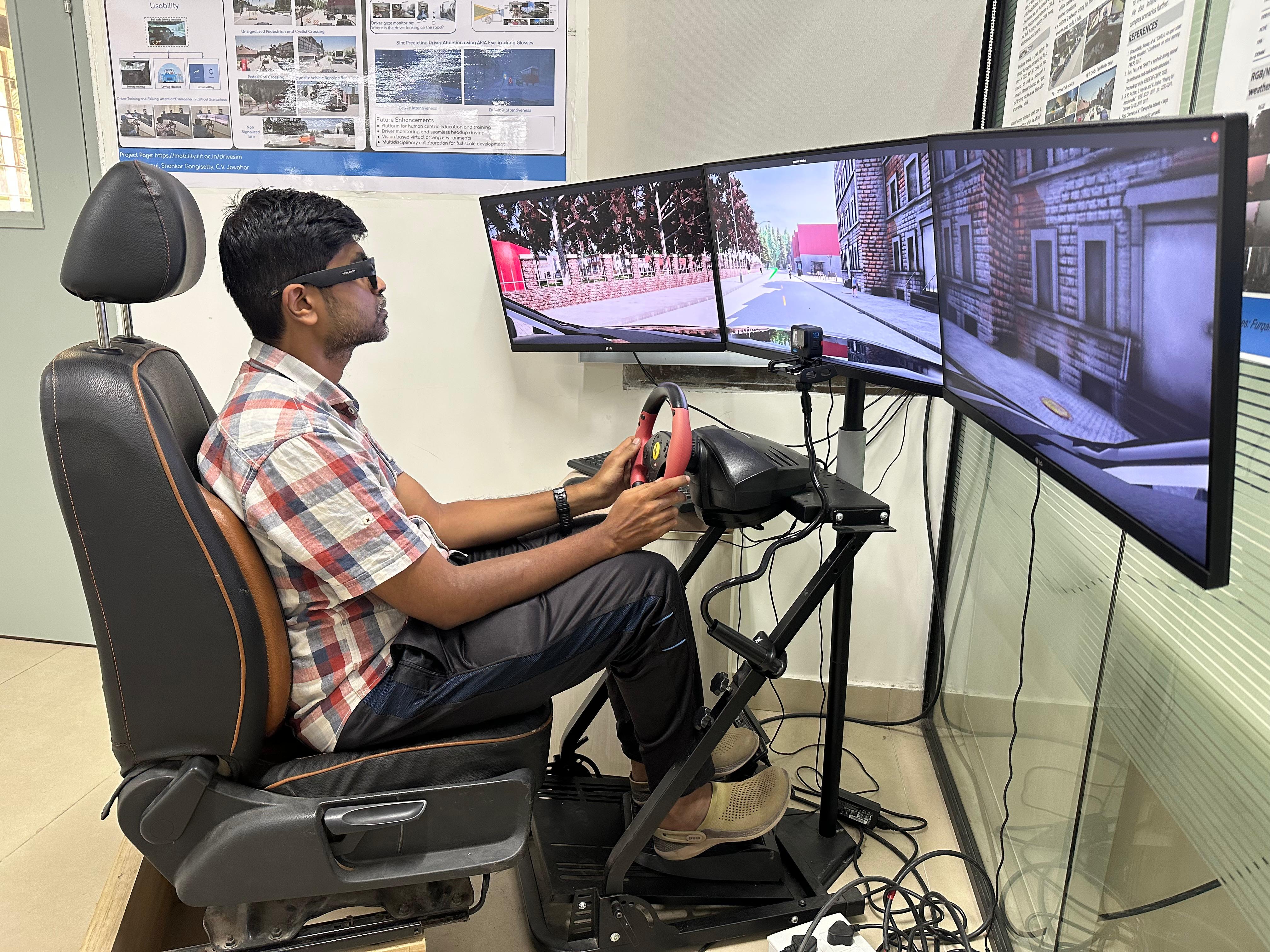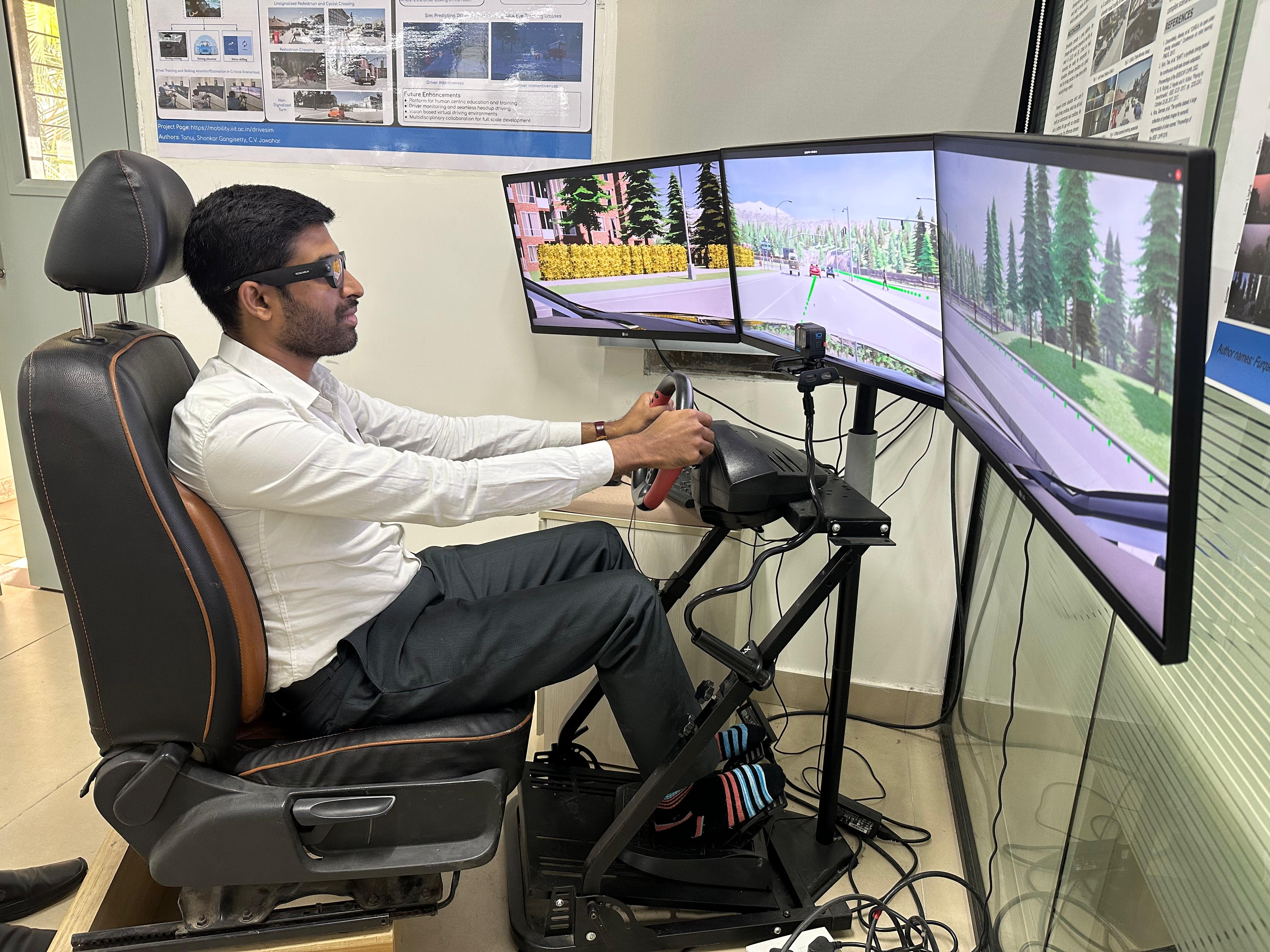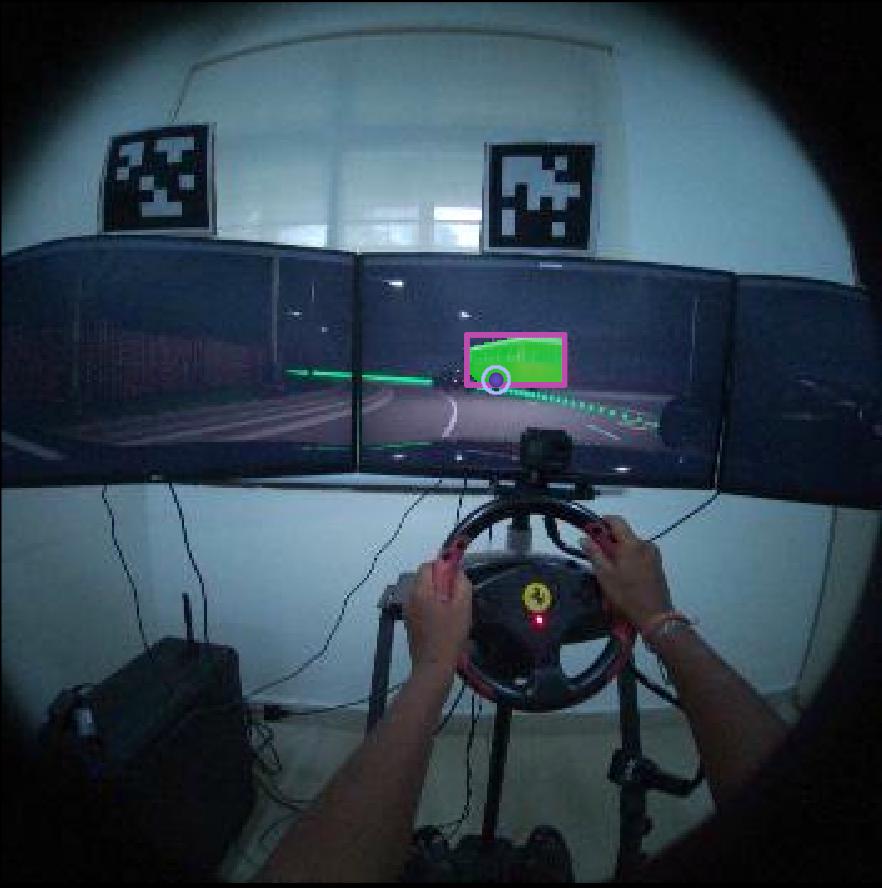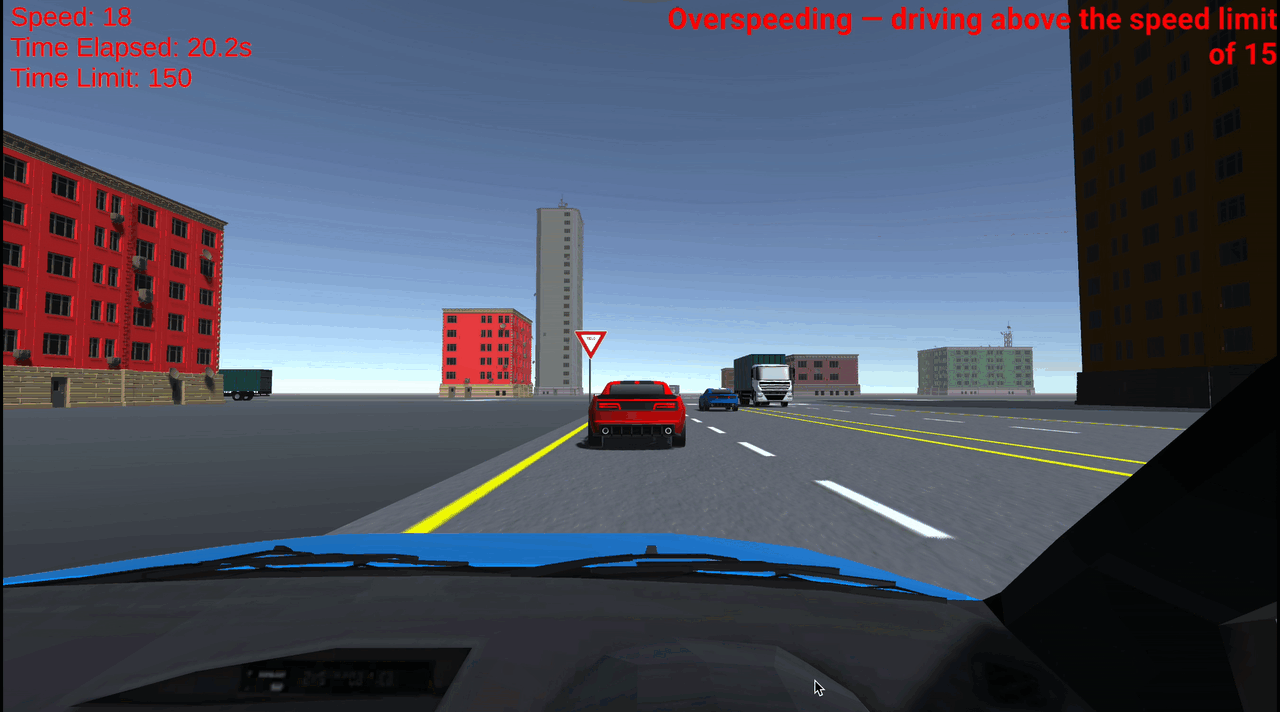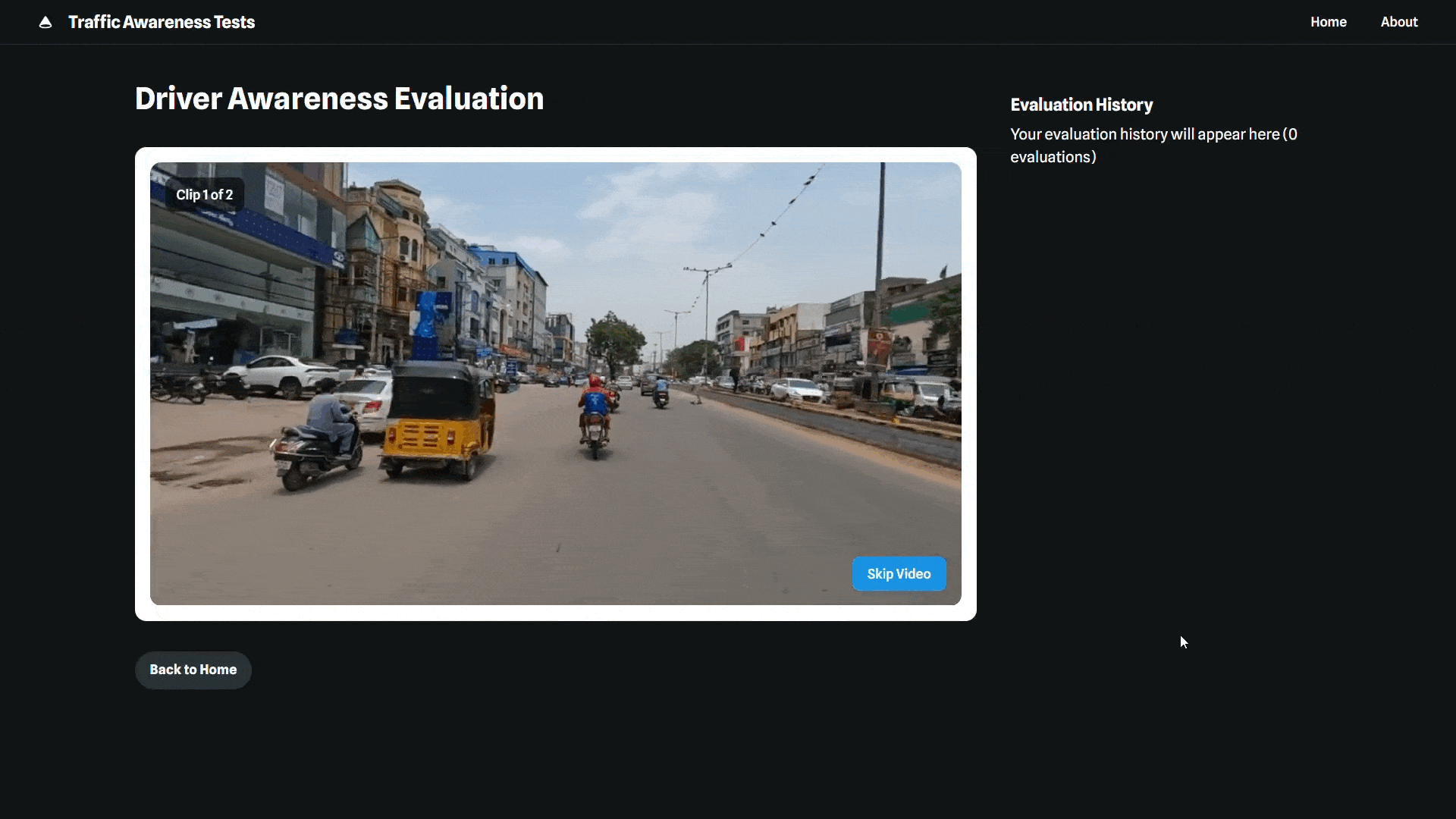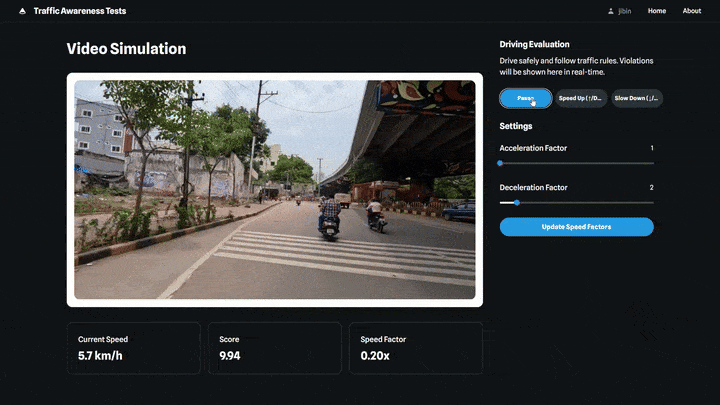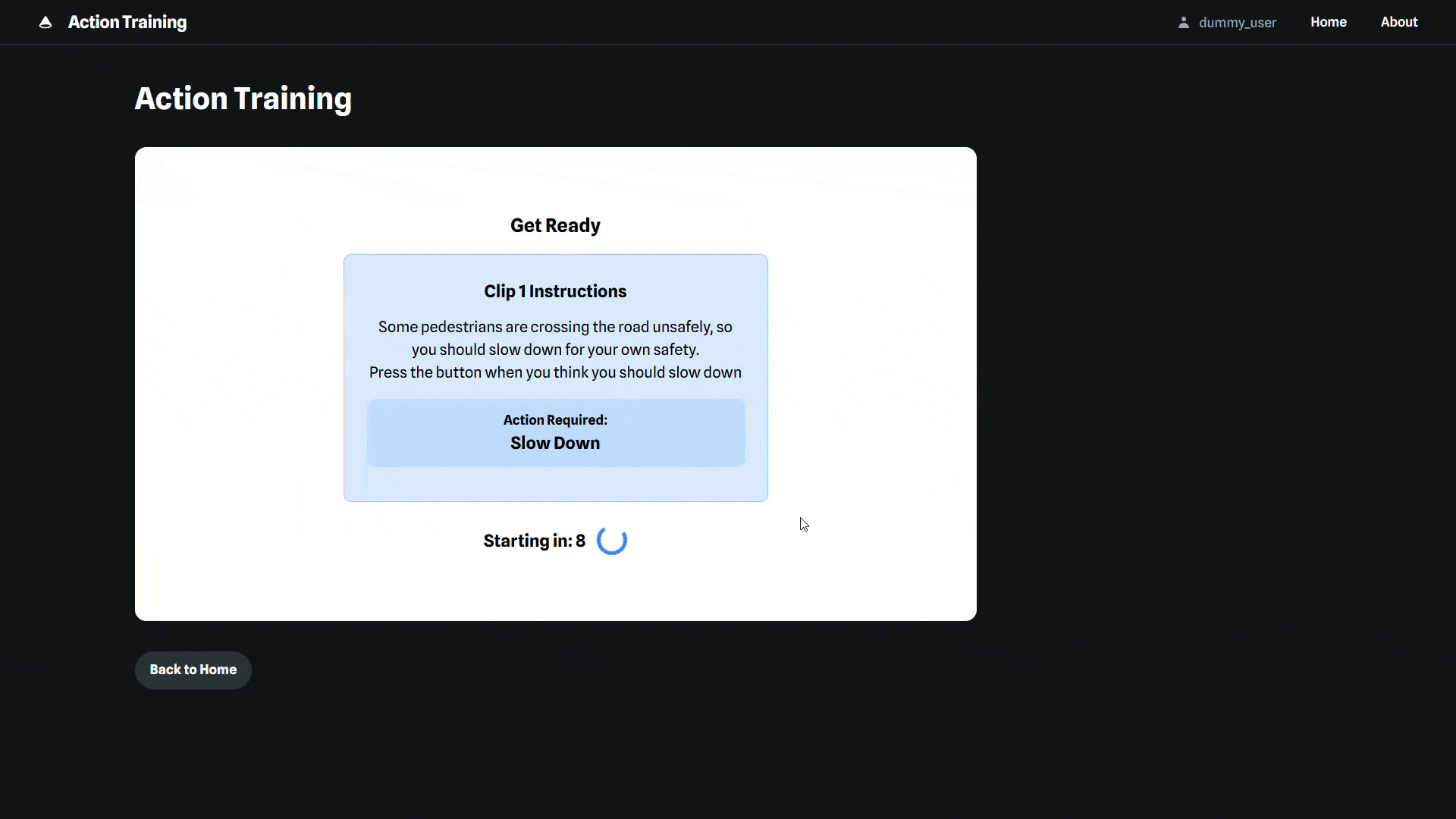Platform Development
The portable driving environment simulator platform is an in-house development designed to simulate Indian traffic conditions using the CARLA open-source simulator.
Features:
- A three-screen, high-resolution display providing a 135-degree forward visual field-of-view
- A cockpit
- Fully operational driving controls (steering wheel and pedals)
- Simulator software package (CARLA)
The Driving Simulator platform initially started with a single monitor connected to a steering wheel and a machine. It was later upgraded to a three-monitor setup in a workspace. Eventually, a fully functional simulator platform was developed, featuring a triple-monitor system and an accurately designed seat to provide a realistic driving experience.


Simulated Critical Traffic Scenarios
Driving Levels: Elementary, Intermediate, Advanced
- We simulate a range of roadway environments, including urban, suburban, rural, and motorway settings, as well as custom events such as hazardous situations (critical and dangerous driving scenarios) that cannot be staged in the real world due to safety concerns. Additionally, various weather conditions, illumination levels, and traffic situations are simulated.
Data Capture and Collection Setup
- Data Capture Setup : The data capture setup is designed to comprehensively analyze driver behavior and gaze patterns using multiple perspectives.
- GoPro Hero 8 Camera: Positioned to capture a clear view of the driver while driving, providing insights into posture, hand movements, and overall behavior.
- Meta Aria Glasses: Used to track and analyze the driver's gaze patterns, helping to understand focus, attention shifts, and reactions in different driving scenarios.
- Screen Recording View: Captures the road ahead, recording traffic conditions, obstacles, and environmental factors that influence the driver's decisions.
Speed Compliance Assessment: Monitors how well users follow speed rules by letting them control video playback, simulating real driving with penalties for traffic violations.
Hazard Perception Assessment: Challenges users to quickly react to real-life traffic scenarios like sudden stops or pedestrian crossings, testing their decision-making under pressure.
Traffic Awareness Assessment: Checks the user's attention to detail by asking them to spot traffic violations in video frames, helping assess situational awareness and road rule knowledge.
Data Collection
We collected driving data with 24 drivers to analyze their behavior and gaze patterns while wearing Aria glasses. The study included various levels of driving difficulty, different weather conditions (sunny, clear, and rainy), and diverse routes.
Each driver participated across three skill levels—elementary, intermediate, and advanced— while navigating through selected towns, each presenting unique driving challenges.
Drivers provided detailed feedback on their experiences, highlighting the challenges faced, ease of navigation, and overall engagement. Many described the study as a driving school- like experience, combining fun with skill-building, making it both an educational and enjoyable process.
Gaze-Based Automatic Segmentation
In this work we focus on utilizing gaze-based technology for automatic segmentation. By tracking the driver’s eye movements, the system identifies areas of interest, analyzes driving behavior, and assesses potential risks in real time. This approach enhances safety by providing insights into driver attention and detecting hazardous situations.
Segmentation of traffic objects using gaze data
DriveRight: Intelligent Driving Education System
In this work, we focus on DriveRight, a lightweight, Unity-based driving assessment platform developed to support configurable driver training and license testing. The simulator provides immersive driving experiences through realistic vehicle dynamics, diverse road signage assets, and VR support across varying environmental, lighting, and traffic conditions. It supports multiple road rules and regulations and incorporates a robust assessment framework with real-time violation detection, automated screen capture, and a multi-criteria scoring system. These features collectively enable objective, actionable feedback for effective driver skill development. In this work, we focus on DriveRight, a lightweight, Unity-based driving assessment platform developed to support configurable driver training and testing, ranging from basic to advanced levels. The simulator provides immersive driving experiences through realistic vehicle dynamics, diverse road signage assets, and VR support across varying environmental, lighting, and traffic conditions. It supports multiple road rules and regulations and incorporates a robust assessment framework with real-time violation detection, automated screen capture, and a multi-criteria scoring system. These features collectively enable objective, actionable feedback for effective driver skill development.
Real-World Video Simulations for Enhanced Driver Assessment and Training
In this work we present a video-based driver evaluation system that assesses speed compliance, hazard perception, and traffic awareness using real-world driving footage with telemetry data. Users interact by controlling playback speed, responding to hazard scenarios, and identifying traffic violations in selected frames. The system provides a holistic evaluation of both reactive and observational driving skills.


